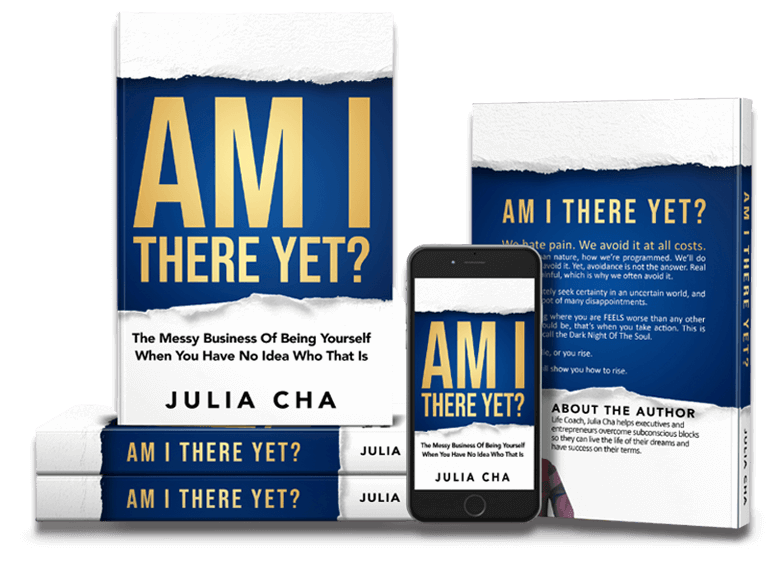HOW TO GET A PEACEFUL MIND: TRUE OPTIMISM AND HIGH PERFORMANCE MINDSET

True optimism, or positive thinking patterns, are a high performance mindset requirement.
Martin Seligman is a leader in positive psychology. In his book, Learned Optimism, he shares a plethora of research on analyzing the best performing athletes and leaders. They all have something in common: relentless, true optimism.
True optimism and happiness is not toxic positivity, where avoidance creates the illusion of happiness.
Optimism is not about how one responds when things are going well. Optimism is about how one responds when all hell seems to break loose, or when major failures are experienced.
Those who are truly optimistic are observed to rise from big problems, and exceed expectations.
How do we know how positive and optimistic we’ve been? Our life and business results will show us!
All your life and business results are an indicator of your optimism meter up until this point.
Having a high performance mindset when things are going well is easy. The challenge that we all face is how to maintain it when we’re under a lot of pressure, and experiencing major difficulties that seem to get in our way of our drive, high performance, and achievements.
A negative mindset will sabotage even the greatest riches and abundance we have. A positive, peaceful mindset enhances us to meet our deepest desired, “impossible” goals.
Research shows quite clearly that it is impossible to have an optimistic mind, and have scarce and unhappy results in our lives.
“What we are today comes from our thoughts of yesterday, and our present thoughts build our life of tomorrow: our life is the creation of our mind.” – Buddha
If you don’t have the life and business results that you want, it’s time to learn exactly what it means to become optimistic. How do we learn to be truly optimistic and happy?
Here, let me reference Jonathan Haidt’s Happiness Hypothesis.

The Subconscious Mind and Peaceful Mindset: The Elephant and the Rider Metaphor
This metaphor describes the human mind as two divided part of the elephant being our primitive, unconscious mind. Our logical, conscious mind is the rider who attempts to control this animal-like impulses.
This metaphor beautifully summarizes our internal struggle of why we know we SHOULD or SHOULDN’T do something, but our resulting actions are different.
This is why we have trouble saying “no” to unhealthy foods, why it’s so hard to avoid hitting the snooze button in the morning, and why we skip out doing work that moves the needle. Why, at that moment, our mind will justify that the bad habit we’re about to practice, is the best option for us.
How much we are able to train the animal side of our mind, which wants comfort, safety, and immediate gratification, is what truly creates the results. In this metaphor, our life is the path, the journey.
How the elephant (the automatic subconscious) and our logical mind learns to navigate and cooperate will highly determine the outcome of our lives.

Happiness Hypothesis and Genetics
What Haidt also heavily emphasizes is that happiness is strongly determined by our biology. Surprisingly, in twin studies, biology makes up a great indicator of how people cope with difficult situations. We are all born with “affective styles,” which refer to the felt or experienced part of emotion.
Our affective style is determined by which side of the brain in our frontal cortex is more active.
Those of us with more activity on the left side experience more happiness, less fear and anxiety, and shame. When the cortical “lefties” experience depression, they are able to recover more quickly.
Everyone has different “affective styles.” Affective style is highly genetic, but there are three things that can change the mind: meditation, cognitive therapy, and prozac.

How to Become Happier for a High Performance Mindset – Cognitive Therapy, and Prozac
Meditation is described as a pill that can be taken once a day to reduce anxiety and increase contentment. I myself experience this daily. The best part of mediation is that it is highly effective, and it costs nothing.
The downside of meditation is that you may not see results and it requires you to practice it for some time.
The goal of meditation is to become aware of the automatic thought processes that run wild. Our minds are never observed until we sit still in meditation and look into our minds. This is the process of taming the elephant, the unconscious mind that continues its course whether we are awake or sleeping. In Buddhism, taming the elephant is by breaking the attachments by recognizing that everything is an illusion.
Cognitive therapy is highly effective in healing depression and anxiety by observing critical and negative thought patterns.
Aaron Beck is the leading father of cognitive therapy. He trained his patients to catch and challenge these thoughts, which proved to be incredibly effective. According to Beck, depressed people have three types of beliefs: “I’m no good,” “my world is bleak,” and “my future is hopeless.”
Cognitive therapy further observes thoughts as a main perpetrator of unhappiness. Haidt writes, “Having frequent automatic negative thoughts about the self, the world, and future, and if these thoughts contribute to chronic feelings of anxiety or despair, then you might find a good fit with cognitive behavioural therapy.”
My personal experience is that people often struggle with cognitive therapy because it takes time to see results. Subconscious level healing, where the cognition is shut down and the feelings can be addressed to change the logic data behind is, helps to speed up the process.
Prozac is often introduced when we think of depression as a biomedical issue. When Haidt uses the word “prozac,” he includes Paxil, Zoloft, Celexa, Lexapro, and others that are related. Prozac gets into the gaps between the neurons called synapses that uses serotonin as the neurotransmitter. Once in the synapses, Prozac inhibit the reuptake, resulting in a brain with more serotonin in certain synapses. Prozac takes 4-6 weeks to start benefitting the patient, even though the biological effect is immediate upon taking it.
Even though prozac is a great place to start for those who are highly struggling, it’s not considered a permanent solution. The client is required to turn their thinking patterns around and learn how to have an optimistic, peaceful mindset that will help themselves propel towards success.

H (happiness) = S (biological set point) + C (conditions of your life) + V (voluntary activities)
The level of happiness and the peaceful mindset we experience is determined by our biological set point, which we are born with, previously described as “affective level,” or the happiness gene.
Of course, circumstances do matter, and there are two other factors that add to the level of happiness: Condition (ie. circumstances), and V (voluntary activities).
The C is internal and external conditions. Haidt uses the examples of ongoing sudden noises, commuting, and lacking control (such as in noise and traffic), shame, as well as our relationship with other people, make up the C (condition) that attribute to our happiness level.
The V (voluntary activity) include physical activities, meditation, practicing mindfulness, and engaging social activities that contribute to happiness.
In Haidt’s definition, happiness is a formula. The level of happiness is the level of the biological set point, plus our life circumstances, and what voluntary activity we do to increase our happiness level.

Other Contributors to Happiness and High Performance Mindset
Flow
People who experience flow often, which is described as “the state of total immersion in a task that is challenging yet closely matched to one’s abilities. It is what some people sometimes call “being in the zone.” It is observed that every successful person experiences flow frequently during their days.
Flow can happen during a group activity, as well as during solitary activity. There is enough challenge, and we get immediate feedback on how we are doing by experiencing micro successes along the way. In flow, “the elephant and the rider are in perfect harmony.”
Love and Attachment
Understanding our attachment style (secure, avoidant, or resistant) is majorly related to how we were mothered. Our romantic love patterns are a repetition of the attachment we formed as babies. Love is a huge contributor of happiness. When we’re happy, we become extraordinary in creating high performance results.
Haidt goes into depths describing resilience developed in children, and how it contributes to happiness. Love conquers fear, and as babies, we learn to conquer our fear by retreating to the safety of our parent (typically, mother). This is the first of many experiences of love versus fear.
The way to conquer fear and venture out into the unknown, take risks, is to have a sense of security. In experiments, baby monkeys and baby humans all exhibited similar behavior of needing to attach to the mother, or a mother figure, as a part of survival instinct. Love and attachment to the parent and our tribe (family, society, etc) is what keeps us safe, and love is what contributes our resilience from difficulties of life.
If you’re interested in self-development and achieving success, a peaceful mindset and learned optimism is a basic foundational requirement.
Many of these concepts will seem obvious. However, practicing them daily is the challenge for every single person who wake up and feel discouraged from not achieving their goals.
Doing the real work around self-development is about going deep into our automatic patterns, becoming deeply aware, brutally honest, without self-jugment.
To understand this process of change further and achieving incredible success on your terms, read the Best Selling Book, Am I There Yet? The Messy Business of Being Yourself When You Have No Idea Who That Is.

